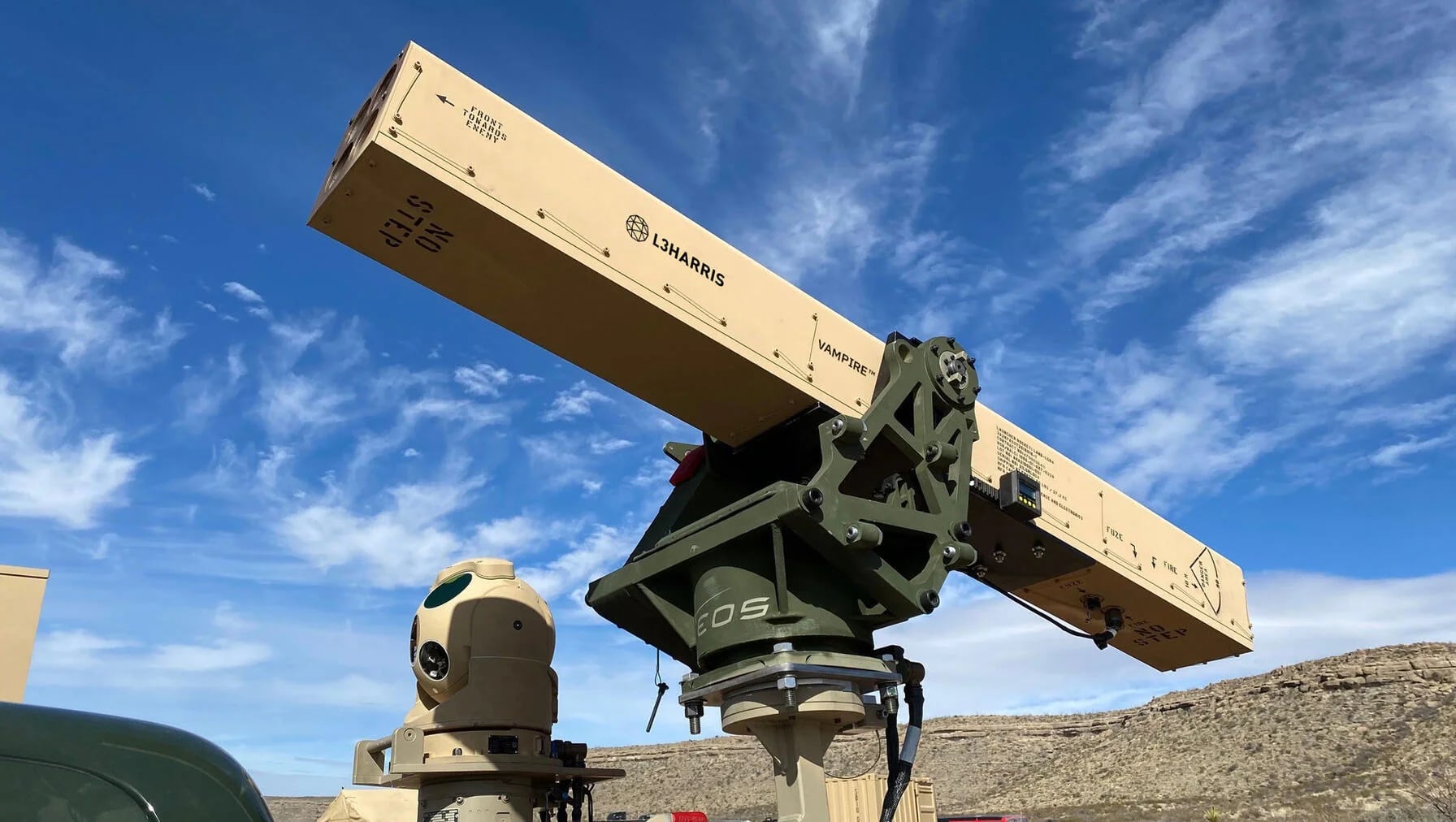WASHINGTON — The U.S. is sending Ukraine “Vampire” kits that transform pickup trucks and other non-tactical vehicles into highly portable missile launchers.
As part of a $3 billion package for Ukraine that the Pentagon announced Wednesday, the Vehicle-Agnostic Modular Palletized ISR Rocket Equipment system is a portable kit that can be installed on most vehicles with a cargo bed for launching the Advanced Precision Kill Weapons System or other laser-guided munitions.
The L3Harris-made weapon ― a small, four-barreled rocket launcher and sensor ball ― can be mounted in two hours and operated by a single person, the company said. It can be equipped with missiles to hit ground or air targets including unmanned aircraft systems.
“The Vampire system itself is a counter-UAS system, ” said Colin Kahl, undersecretary of defense for policy, said at a press briefing Wednesday. “It is a kinetic system that uses small missiles essentially to shoot UAVs out of the sky.”
While the Vampire system isn’t advertised as a counter-drone weapon on L3Harris’ website, Ukraine has used similar munition-style weapons to take down drones throughout its conflict with Russia.
As the Russia conflict crosses the six-month mark, the most recent aid package is aimed at providing sustainable and affordable options to Ukraine. Alongside the Vampire, the Pentagon is also sending Puma drones and a host of ammunition.
“Our VAMPIRE system will provide the Ukrainian people with even more robust capabilities as they continue to defend their country and democracy in Europe,” Melbourne, Fla.-based L3Harris said in a statement to C4ISRNET. “We will continue to offer our steadfast support of their mission.”
Drone warfare has been heavily utilized by both sides in the six-month-old conflict, with many being sourced from countries outside the war.
Kyiv has drawn support from the U.S. and the United Kingdom, both of whom pledged new drones and counter-drone technology to the conflict on Wednesday, Ukraine’s Independence Day. Russia, meanwhile, has looked to Iran to sustain its supply of drones, according to U.S. officials.
The Vampire is part of a larger package in aid to Ukraine, bringing the total amount supplied to the country during the Russia-Ukraine conflict to more than $13.5 billion since the start of the Biden administration.
The Biden administration selected the Vampire — a low-cost and easy-to-assemble weapon compared to other counter-drone measures, such as electronic warfare technologies — for a package advertised as providing supplies for Ukraine’s long-term needs.
“We’re trying to be very deliberate about what systems we think makes the most sense for Ukraine to have in that context, and it also matters very much: Can they sustain it? Can they afford it? Because of course billions of dollars of international assistance may not be something 10 years from now or 20 years from now,” Kahl said.

When the Pentagon did not disclose which “Vampire” system they were sending to Ukraine, it fueled to speculation on social media on as to what weapon the Ukrainians were set to receive. L3Harris confirmed evening that the system in question was the rocket equipment.
The rocket launcher isn’t the first weapon nicknamed after the creature of the night to enter the conflict.
Footage published by the 10th Separate Mountain Assault Brigade of the Armed Forces of Ukraine on July 11, shows Ukraine using the Czech Republic’s RM-70 VAMPIR 122mm Multiple Launch Rocket Systems.
The Czech system, which is designed by Excalibur Army, looks similar to the the L3Harris’ weapon, with a rocket-launching system as the main feature. Unlike the L3Harris system, the MLRS Vampire uses a large military vehicle rather than a simple pickup truck as its launching platform.
“Ukrainian MLRS Vampire aren’t afraid of sunlight,” the Ukrainian Ministry of Defense said in a Tweet accompanying the video. “They are not afraid of anybody; they’re just doing their job.”
Catherine Buchaniec is a reporter at C4ISRNET, where she covers artificial intelligence, cyber warfare and uncrewed technologies.
Joe Gould was the senior Pentagon reporter for Defense News, covering the intersection of national security policy, politics and the defense industry. He had previously served as Congress reporter.





